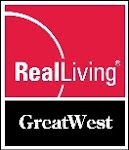The 26-year-old house in Fair Oaks was a product of its time, all-electric and power hungry, built in an era of Rancho Seco nuclear power.
Remodeled in 2009, the house is now the product of a new time, and it's all about energy conservation.
Tucked away on a quiet, pleasant street near Hazel Avenue, the house is the Sacramento Municipal Utility District's newest demonstration of how Californians will use energy more sparingly in the future.
It's also a showcase of products and techniques representing potential green growth for the capital region's battered construction sector, which is building barely any new houses these days.
The remodeled house on Quail Hill Way is designed to use 60 percent less power than it did before.
"It's not strange. It's not goofy. It's not an earthship made of car tires," said Jim Bayless, who has transitioned from struggling home builder to green retrofitter. "It's a normal house," he said.
Bayless, owner of now-idled Treasure Homes, bought the three-bedroom, two-bath house in May as a $150,000 short sale. He and partners in Folsom-based GreenBuilt Construction spent $141,000 to reroof it, install leading-edge appliances, solar power, the newest windows and other emerging systems known to vigorously slash kilowatt-hours.
SMUD, which signed on as a partner, will rent the house for a year, at $1,700 a month, to show its features to the public and area building contractors. It's part of the utility's shifting focus to retrofitting existing homes. Deals with home builders to add solar power systems to thousands of newly built area homes have stalled with the housing crash.
"If we can duplicate this in some fashion by the tens of thousands, how much energy could we save?" asked Mike Keesee, a project manager at SMUD. Keesee said mass retrofits of existing homes could spare SMUD the costs of building power plants and take pressure off peak demand situations such as heat waves.
Homeowners, too, may find it easier soon to finance such improvements. As a result of Assembly Bill 811, a law adopted last year, local governments throughout the capital region are considering making loans to pay for the upfront costs of home energy improvements. The loans would be wrapped into property tax bills with repayments spread over years and multiple owners.
Financial incentives and rebates also can help with the upfront costs needed to save money later. SMUD estimates the costs of energy efficiency upgrades in the Fair Oaks home at about $32,000.
When tours start Oct. 24, visitors will see a house filled with simple fixes that range from a radiant barrier beneath the roof � somewhat like a car's reflective windshield sunshade � to a 40-gallon rooftop water tank where the sun warms water for the house. There is a water faucet above the kitchen sink that turns off with a tap of the hand, and new ways to seal the house tight to prevent leakage of heated and cooled air.
New dual-pane windows also keep out hot exterior air in summer and keep warm interior air in during winter.
"Windows," said Keesee, "have come so far."
An Internet-based monitoring system in the house is reminiscent of the futuristic 1960s cartoon, the "Jetsons," allowing the homeowner to adjust interior temperatures with a remote control at home or from a desktop computer at work. The computer even shuts the garage door if it perceives that the owner has left it open after leaving for work.
"There are lots of little details, and that's what it's all about, getting the little details right," said Bayless during a tour this week.
SMUD helped fund some of the work as a demonstration project aimed at spurring others to act. Manufacturers offered deals on energy efficient products in return for the expected exposure during tours. Colorado's National Renewable Energy Laboratory, a U.S. Department of Energy affiliate, is also a partner, providing technical support and analyzing the energy savings.
NREL's manager for residential research, Ren Anderson, said Tuesday the laboratory's goal in Fair Oaks is to help "enable utilities in California to meet their long-term mandated goals for renewable energy and energy efficiency." By 2020, California aims to build homes that generate the power they consume. The state aims for all buildings to do the same by 2030.
The Fair Oaks remodel comes a year after Keesee and SMUD teamed with a Folsom firm to build a so-called "House of the Future" near downtown Folsom. That demonstration house, touted as a model for large-scale home builders to imitate, was declared one of the most energy efficient houses built in the United States. It sold in January for $625,000.
Keesee said his research shows the Fair Oaks retrofit and demonstration house is among 20 to 30 of the most efficient homes nationally.
"There are maybe five to six in California at this extreme that I could find," he said. "That doesn't include the people who have quietly done it on their own.
Source Sac Bee
Wednesday, October 14, 2009
Subscribe to:
Post Comments (Atom)



No comments:
Post a Comment